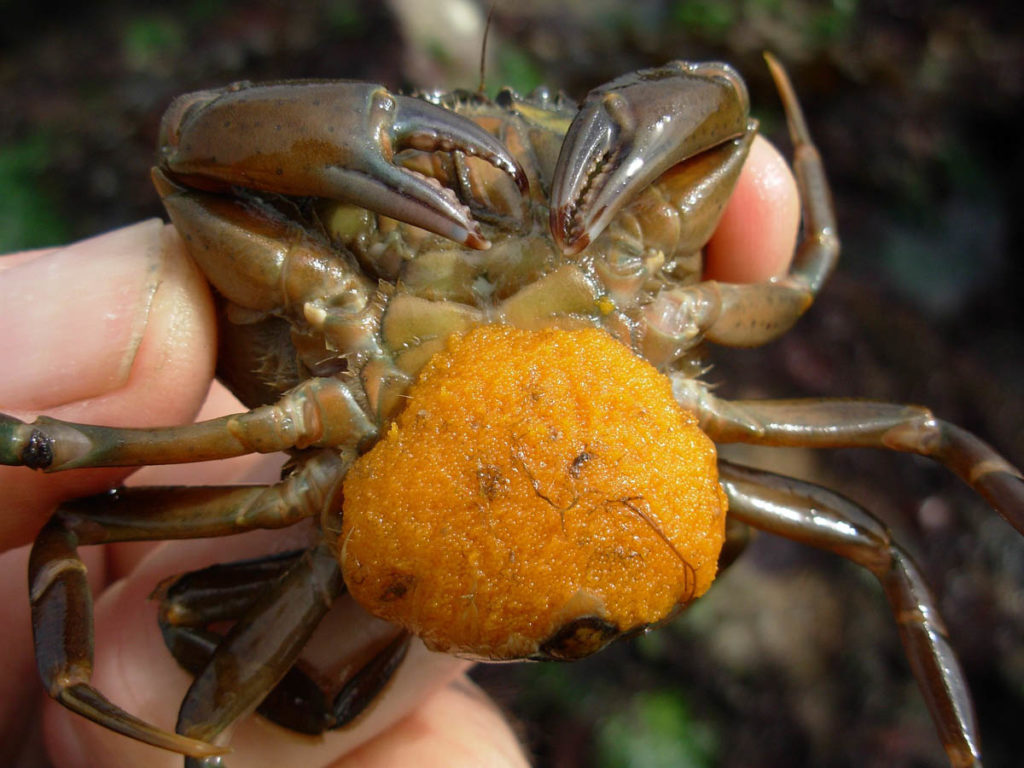Fishermen on Canada’s east coast believe the European Green Crab species is here to stay. They’ve been watching the situation for nearly two decades, and it’s safe to say that things are getting worse. They’re running rampant.
In Canada, the European Green Crab has invaded:
- New Brunswick in 1951
- Nova Scotia in 1953
- The Gulf of St. Lawrence in 1994
- Prince Edward Island in 1997
- British Columbia in 1998
- The Magdalen Islands, Québec in 2004
- Newfoundland and Labrador in 2007
European Green Crabs are indigenous to Europe and North Africa. They most likely arrived in North America in the holds of wooden ships around 1817.
Despite their similar appearance, different populations of European Green Crab can be found in eastern Canada. The first population moved north from the eastern North Atlantic seaboard into Atlantic Canada in the early 1950s, and they are not cold tolerant.
A second population arrived in northern Nova Scotia in the 1980s and 1990s, and they are better adapted to colder waters because they originated in northern Europe. These two populations have mated and reproduced, resulting in the formation of a third cold-tolerant hybrid population that is rapidly spreading north and south in Atlantic Canada.

Besides the green crabs colour, they can be identified by their carapace (dorsal upper section of the exoskeleton) that can be up to 60 mm (2.4 in) long and 90 mm (3.5 in) wide, but has been known to grow to be 100 mm (3.9 in) wide in British Columbia, where they also call home. The carapace has three undulations between the eyes and five short teeth along the rim behind each eye.
The green crab is a common invasive species that has been dubbed “the world’s worst alien invasive species.” They are a predator that feeds on a variety of organisms such as bivalve mollusks such as clams – and can eat up to 40 clams per day – oysters, mussels, polychaetes, and small crustaceans such as other crabs up to their own size. Crabs are primarily diurnal, but their activity is influenced by tides and can occur at any time of day. They can be found on rocky beaches, cobble beaches, sandflats, and tidal marshes. They are frequently found near eelgrass beds or other types of shoreline vegetation. Females can lay up to 185,000 eggs, and larvae develop in stages offshore before moulting to juvenile crabs in the intertidal zone. Until they reach adulthood, young crabs live among seaweeds and seagrasses.
Various efforts have been made around the world to control introduced populations of green crabs due to their potentially harmful effects on ecosystems. To protect local shellfish, a bounty was imposed in 1995 in Edgartown, Massachusetts, for catching them, and 10 tons were caught. Various groups have investigated using green crabs in cuisine in New England, where invasive green crab populations are high. The Green Crab Cookbook, which included recipes for soft-shell green crab, green crab roe, green crab stock, and green crab meat, was published in 2019. Greencrab.org, an organization dedicated to developing culinary markets for the invasive green crab, was founded by one of the book’s co-authors. Greencrab.org has continued to develop green crab recipes and processing techniques, in addition to collaborating with local chefs and wholesalers on supply chain development and market research.
Legal Sea Foods, an East Coast restaurant chain, previously experimented with green crabs, producing a green crab stock in their test kitchen during the winter of 2015. Chefs have described the crab as sweeter than blue crab, complex and rich.
‘If you can’t beat ’em, eat ’em,’ as the saying goes.






